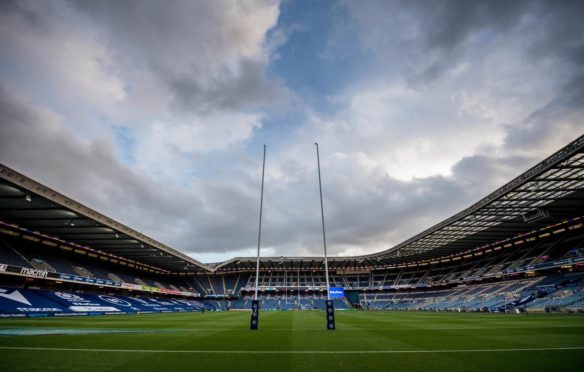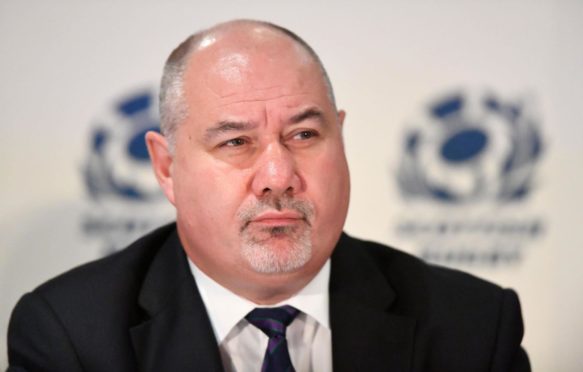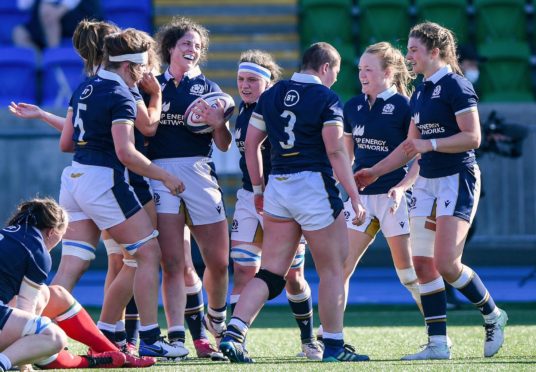As strategy plans go, Scottish Rugby’s Mark Dodson produced one for the next three years that was uncharacteristically vague with more platitudes than one expects from the plain-speaking CEO.
15 months of dodging a pandemic that nearly closed down the sport will do that to forward planning in general, however. It’s s steady course through uncharted waters rather than full-on, engines blazing.
Here’s the main points from Dodson’s presentation on Tuesday.
Why a three year plan?
Covid has put Scottish rugby “two and a half years behind where we want to be, ideally”, said Dodson. The aim is – has to be – to get back to the 2019 levels of turnover and beyond.
This is very much a holding pattern strategy, hence the absolute absence of any target figures or definable goals.
You have to agree with the chief executive that there are more unknowns out there than there were 15 months ago. He referred to the post-pandemic protocols that will inevitably remain and the new United Rugby Championship.
We assume the new competition will be a greater challenge for the pro teams, although the Blue Bulls’ pallid and passive performance in the Rainbow Cup final was at least interesting.
But why set targets in such an environment only to be shouted down? One assumes Dodson will never again be publicly targeting winning World Cups as he did when he was fresh in the door.
A boon for the women’s game
The “Rugby For Everyone” tag-line in the strategy might have been seized on by those still fighting the class wars of 50 years ago, but actually it’s about inclusivity of a more basic sort. Scottish Rugby has realised that embracing half the population might be a good idea.
The significant proportion of women at Murrayfield internationals should have switched them on far quicker than this. But it’s never too late to do the right thing.
Dodson revealed that more than half the applications for support from the fund to restart after Covid directly related to clubs expanding or starting a women’s section.
“We didn’t specify in the fund what people should ask for money for; this is what they’ve realised they have to do,” he added. “They have to change their clubs, make them more welcoming and sustainable … community hubs.
“The quickest way to do that is attract women and girls to a facility they feel comfortable.”
The women’s national team’s greater coverage in the Six Nations also spiked interest. A pro or semi-pro team is on the horizon. The small problem of finding them a competition to play in remains. Sponsors in particular wanted SR to go down this route, said Dodson.
This is a modest-investment-easy-win for rugby. It’s an open goal that not even the national football team could miss (sorry, too soon?).
It’s the Super6/8/10 way or the highway
🆚 A reminder of the 2021 fixtures for all @Super6Rugby teams.
Every Sunday match will be shown live via the competition's new broadcast partner, @FreeSports_TV.
— Scottish Rugby (@Scotlandteam) June 24, 2021
Dodson didn’t dismiss restarting the old Inter-District Championship, as a motion to the as-yet undated AGM requests. But it won’t be in place of his stepping stone from club to pro rugby.
The ultimate ambition of the fledgling semi-pro tournament is 12 teams and even two tiers. “But we have to get to eight first”, admitted Dodson.
The idea is to do that within the three years of the strategy plan, probably adding teams in Caledonia/Midlands and in Glasgow city, the areas roundly ignored in the first round of franchise selection.
31 players from Super6 had already graduated to the pro teams, he pointed out. So even without a full, complete season, it’s already working, he argued. “If we’d had if three iterations of Super6 and cross-border championships by now then we wouldn’t be having this (debate)”.
Thus the CEO felt confident enough in his position, even pre-AGM, to call the debate over.
“The resistance to Super6 is not universal, a lot of clubs are quite happy this is taking place,” he said. “There’s a small number of clubs that feel deeply about it, that’s understandable and it’s fine.
“But there’s got to be a moment in time where we move on from this debate, and we have a concentrated effort to get behind Super6/8 because it is going to be the performance pathway.”
Hey, some are still debating clubs vs districts 20 years on, so good luck with that.
The importance of the international and pro game – and of Murrayfield
90% of Scottish Rugby’s revenue comes from the professional sector – 70% from internationals, 20% from the pro teams, revealed Dodson. Clearly the slant of investment has to be weighted heavily towards their success.
The cornerstone of that is the national stadium itself. Although not an outright debacle as some sensitive souls suggested, Saturday’s Lions game was not a great look. It brought into sharp focus that EH12 5PJ is looking a bit frayed around the edges.
The policy has been to target limited investment in a piecemeal fashion. But there comes a point when tarting up various parts of an ageing ground – 1994 is really old in modern terms for elite-standard stadia – doesn’t cover up the shortcomings.
Scottish Rugby paid for the rebuilding of the stadium 27 years ago entirely by themselves – plunging the union into debt it took years to extricate itself from. That is simply not an option in the 21st century.
Frankly with upwards of £80 million of public money spent on our other national stadium so far – and still no-one’s happy – rugby deserves some assistance from the public purse as well.
Dodson says he’s discussed the issue with the Scottish Government, but post-Covid it’s hardly going to be high on their priority list. Partners of other sorts will have to be found, and the Six Nations/CVC windfall of £44.5m would constitute a fair whack of what needs to be done (although not nearly all).
But Murrayfield is central to Scottish Rugby’s appeal and its earning ability. Moving out of this prime location is a non-starter. The bullet will eventually have to be bitten here.



